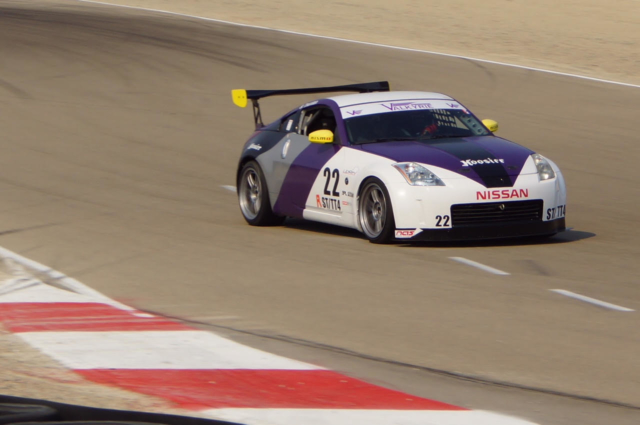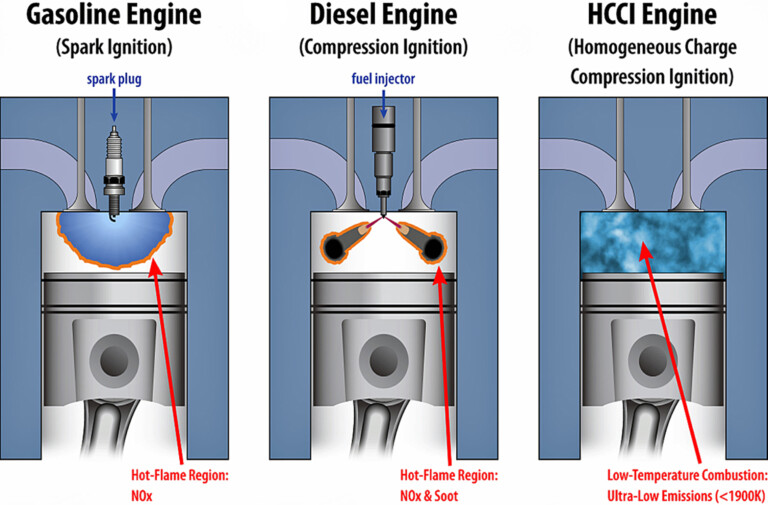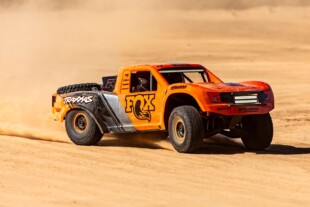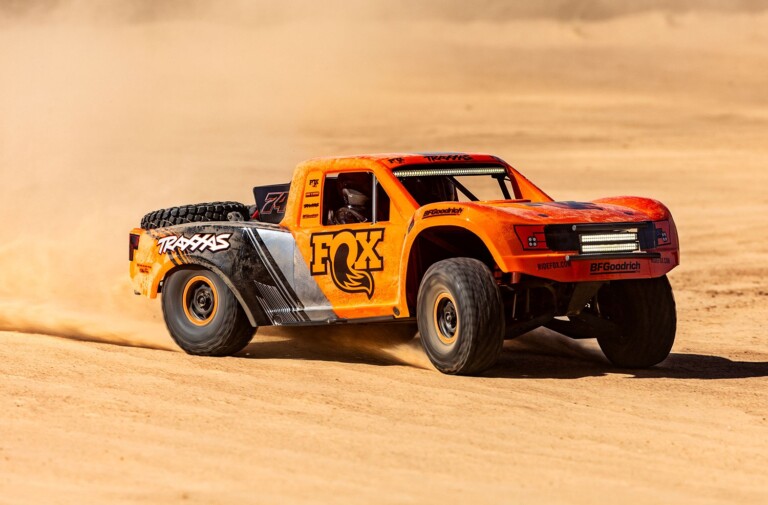Above is Andrew Kidd’s onboard footage, while Brian Lock’s can be seen further down.
When equally-matched competitors in similar-but-different cars dice at Thunderhill, some clever strategy is necessary to win. Both Andrew Kidd and Brian Lock are both tremendous drivers, and their cars—both adhering to NASA ST4 regulations—are both so similar in outright performance that neither party has a commanding advantage in hardware alone.
Kidd’s turbocharged Mazda Miata is lighter, easier on tires, faster out of certain corners, and obviously very nimble. Lock’s heavier and more powerful Nissan is as quick in most sections, and has the top-end power to aid it on long straights, as well as greater stability through the high-speed sections. As neither party holds an edge with their car alone, they must resort to using all their subtle trickery while still keeping their machinery in great shape. With traffic, tires, temperatures, and taunts to consider—all while turning competitive laps—the challenge of beating an equally-matched opponent is much more like chess than some people give racing credit.
Two Competitors—Two Characters
Kidd runs his red Miata in NASA ST4 and Supermiata S1, and it also serves as the test mule for all the motorsports-grade parts which his company develops. Refined over years of competition, this featherweight—weighing in at just 2,473 pounds—uses a responsive turbo motor to reel in more powerful adversaries. Trackspeed’s Stage 1 engine, built upon a basic BP05 block, provides the broad powerband and linear delivery perfect for the road course.

This turbocharged Miata puts all its power down with only an OEM Torsen differential. Photo credit: Larry Koh
The concoction is nothing extraordinary, but rather the sum of the right parts. Forged rods and pistons, ACL race bearings, ARP head studs, and Supertech double valve springs make up the internals. An MS Labs MS3 ECU, Flow Force 640cc injectors, and a Deatschwerks DW200 fuel pump help provide the right mixture, and a Borg-Warner EFR2658—which, incidentally, is the turbo used on a car we featured a while back—provides the pressurized air. Small and responsive, the modestly-sized snail is complemented by a Skunk2 64mm throttle body.
This package produces a broad powerband and respectable figures: 215 horsepower and 204 lb-ft to the rear tires at a reliable ten pound of boost, and ninety percent of that torque is available from 3,500-6,200 rpm. In short, it’s very tractable and doesn’t overwhelm the rear tires except in the slowest corners.

For the car and its tires, this amount of power is almost perfect. Photo credit: Trackspeed Engineering
The Miata also profits from a stable platform and good grip. The rear is kept from sliding much with a stock swaybar, Trackspeed bushings, and 10″ wheels wrapped in Hoosier R7 slicks. In fact, the car runs a square setup, but the due to the aerodynamic balance, the car tends to understeer at speed. Not what you’d expect from a Miata with that much horsepower, is it?
Thanks to the custom airdam and splitter, and the APR GT-250 64″ aerofoil, the car generally exhibits steady-state understeer at the speeds reached on Thunderhill. Above eighty miles an hour, it’s neutralized by the aerokit, and above 120 miles an hour, which Kidd rarely sees on California circuits, the rear aerofoil develops more downforce than the front, and the push worsens—though at those speeds, a little understeer is reassuring and generally kinder to tires.
Regular readers of Turnology are likely familiar with Brian Lock’s exploits. The man has campaigned several highly-modified Nissan Zs in NASA racing for several years now—most notably at the 25 Hours of Thunderhill, but also in shorter sprints against Porsches and BMWs with lots of success.
https://
His steed for this particular dice is a mildly-built 2003 350Z made for a customer of his. The motor, a mostly-stock VQ35DE, is upgraded with Jim Wolf cams and PPE headers for 280 horsepower and 240 lb-ft of torque at the wheels. Crucially, it provides less immediate torque at lower revs—a testament to the Trackspeed engine—but compensates with greater power at higher revs. At a varied track like Thunderhill, those engine characteristics are evident.
The Nissan is a hefty bruiser, but thanks to a healthy diet, SPL spherical bushings, JRZ coilovers, and 275-section Hoosier slicks, it turns as well as the Miata in most corners. However, those tires take a bigger beating due to the additional weight, so Lock needs to treat his rubber with a little more consideration than Kidd does.
All in all, the two cars are very evenly matched, and the drivers are aware of their minor advantages and handicaps. Outright lap times aren’t going to give the lead to either driver—instead they need to gain an edge by maintaining their equipment, finding the fastest ways through traffic, and keeping a clear head.
Engine Temperatures and Drafting
The aerodynamics of both cars here play a huge part in their overall performance, even if they take the majority of Thunderhill’s corners below eighty miles an hour—where downforce begins to play a role. When acceleration is so similar, finding a tow is a great way to go.
To improve the slipperiness of the Miata, Kidd blocked off certain areas of the radiator openings, and with an ambient temperature of 102°F during this dice, Kidd cannot use the tow without caution. Following in the dirty air of the 350Z for too long, and Kidd’s engine begins to overheat—and so his ability to slipstream is seriously compromised.
With more power and no serious cooling issues, Lock is able to extend his lead at the end of each straight. Furthermore, the fastest corners usually follow the longest straights at Thunderhill, and Lock can capitalize on this straightline advantage with its inherent stability at speed. His advantage through the quick turns 1, 8, and 9 is remarkable.

Though the front airdam’s shape provides downforce, it also restricts airflow to the intercooler. Photo credit: Larry Koh
The challenge of keeping in touch inevitably turns Kidd’s engine temperatures up too far, and so he starts to sympathetically shift 1,000 revs sooner. This approach allows him to stay in touch at the expense of a second a lap. So in order to find a way around, Kidd needs to use some of the slower cars to ‘set a pick,’ if the basketball analogy works.
Managing Traffic and Setting a Pick
Since NASA ST4 has a wide array of different cars running, there are plenty of opportunities to catch or be caught. Fast prototypes lead the pack, while Thunder Roadsters and midgets bring up the rear. There’s a massive disparity in lap times; some forty seconds separating the pack. Therefore, both of these drivers need to make sure they’re able to scythe through slower groups of cars without getting held up.
After trailing Lock for laps, Kidd senses a slow car off in the distance which might provide a passing opportunity. Ahead, Lock and Andrew Morton, driver of the black E36, stumbled upon the stock car dawdling (8:20 in Kidd’s footage). Sensing a break in rhythm ahead, Kidd struck.
“I hung back, elongated my braking zone, ensured I had a clean drive onto the front straightaway, and prayed a hole opened up,” Kidd recalls with startling clarity. Unlike Lock and Morton, Kidd cleanly exited Turn 15 onto Thunderhill’s front straight, and with additional momentum, he split the pair down the middle in a spectacular pass (8:26 in Kidd’s footage).

With Lock boxed off on the right, Kidd took the chance and passed three cars through the narrowing gap.
Unfortunately, his lead was not to last. Though traffic, timing, and a little luck are what helped Kidd attain the lead momentarily, they’re also what demoted him a few laps later. When caught behind a pack of slower cars coming out of Turn 6—an incredibly important corner which leads onto one of the fastest sections of the course, a backmarker pushed Kidd into a mistake (15:15 in Kidd’s footage), and Lock, waiting in the wings, could close the gap and nip by neatly. Though Kidd caught the slide beautifully, the fierce competition meant that mistake cost a hard-earned position.
Lock acknowledges this pass was mostly due to luck, but some of it had to do with his anticipatory positioning. “If you know a pass will come down to exploiting traffic, it pays to leave a little gap,” he notes. If a pursuing driver can pressure their opponent ahead without being subject to the rhythm of the group, they can saunter past casually when their rival is forced to lift, which is exactly what happened to both drivers.

As Kidd struggled with catching a big slide brought on by traffic, Lock grew larger in the rear view mirror.
Treating the Tires Nicely
Getting into a passing position requires vigilance and some sympathy for the consumables. In a closely matched race, extending the tire life as long as possible is a huge asset, and the driver who can keep their tires in good shape is afforded more opportunities to pass, generally speaking.
With equally-matched cars, especially on a hot day, the life of the tires are often the limiting factor. Therefore, to get into a passing position, Kidd had to “spend” a certain amount of finite “tire currency.” In other words, the tires can only be kindly driven at the limit for so long before their performance dwindles. If they’re abused, their performance quickly tapers off.

At the end of the battle, Kidd’s overheating tires brought on a few hairy slides; which helped Lock nip past (14:58 in Lock’s footage).
Too much exertion mid-race, or when two cars are dicing, can limit the tires’ effectiveness when a viable passing opportunity presents itself—so a certain amount of foresight is useful. As Kidd warns, “Even if you have enough tire to catch them, you might not have enough to get around. Or, you can pass them but lose the lead soon after due to tire wear.”
Kidd and Lock don’t run with tire temperature sensors, and so they evaluate the state of their rubber by feel. Regardless of how sympathetic they are, they both run into slight overheating at the end of their stint. In hot weather, it’s much easier to warm the tires than it is to cool them, and eventually a half-lap of restrained driving to cool them isn’t an option. Therefore, they have even fewer real chances to make a pass stick on a blistering day—and fewer still at the end of a race; hence the importance of getting a pass done early on.
Playing Cat and Mouse
With the finite rubber dictating overall pace, it pays to try and trick an opponent into overusing their tires early on in a race. The leader has the ability to dictate the pace of each corner, and even if they’re leading at a slightly slower speed—say a few tenths a lap—they can goad their follower into overdriving.

Getting caught mid-corner by slower cars ahead an avoidance maneuver and more tire wear (8:04 in Lock’s footage).
When subject to the rhythm of the leader, the pursuing driver doesn’t get to drive as cleanly as they would like. They will take different lines, juke, pick up marbles (the tire debris left off-line), and slide around while looking for any conceivable opening, and this will destroy the tires if done recklessly. Again, this kind of driving “spends” the tire quite quickly. Therefore, they need to make a move that sticks and avoid the dramatic bobbing and weaving that will limit their long-term speed.
That isn’t to say that the man behind doesn’t have any tricks he can use. Feinting and “laying a dummy,” if properly executed, might distract the leader long enough to make them lock a brake, run wide, or subtly overdrive the corner. “You can present yourself cleverly to distract the leader,” Lock advises, “by ducking out of the tow and braking slightly off-line.” Filling a mirror is a great way to take someone’s attention off their own driving and cause them to panic. Even if they don’t lose their cool immediately, they might eventually buckle under the pressure.
A Conceded Defeat
Once Lock regained the lead, Kidd knew the end was near. Both drivers’ tires were struggling on the boiling asphalt, and the few opportunities Kidd had to reclaim the lead weren’t significant enough to act on. At 19:48, Kidd got one shot but can’t quite make it stick, but the tires, at that stage in the race, are past their prime.
While not the most spectacular end to a race, it shows how a tooth-and-nail melee like this requires so much thought, foresight, and consideration for the other factors which might help eke out a slight advantage. Furthermore, who can’t say that a tense battle like this would rile them even slightly? Excluding backmarkers and bad luck, the only thing which gives a driver a definite advantage is a cool head amidst a field of frenzied drivers.






















